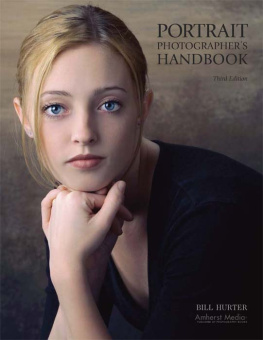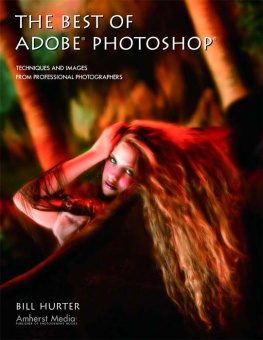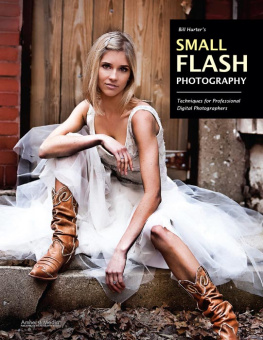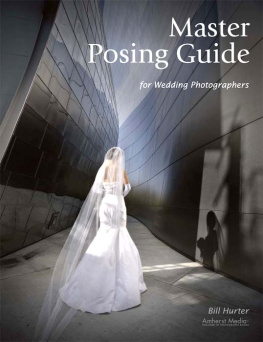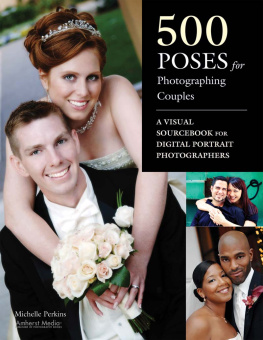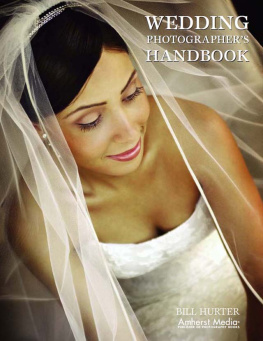Hurter - Portrait Photographers Handbook
Here you can read online Hurter - Portrait Photographers Handbook full text of the book (entire story) in english for free. Download pdf and epub, get meaning, cover and reviews about this ebook. City: London;Buffalo;N.Y, year: 2008;2007, publisher: Amherst Media, Inc.;Amherst Media, Turnaround, genre: Romance novel. Description of the work, (preface) as well as reviews are available. Best literature library LitArk.com created for fans of good reading and offers a wide selection of genres:
Romance novel
Science fiction
Adventure
Detective
Science
History
Home and family
Prose
Art
Politics
Computer
Non-fiction
Religion
Business
Children
Humor
Choose a favorite category and find really read worthwhile books. Enjoy immersion in the world of imagination, feel the emotions of the characters or learn something new for yourself, make an fascinating discovery.
- Book:Portrait Photographers Handbook
- Author:
- Publisher:Amherst Media, Inc.;Amherst Media, Turnaround
- Genre:
- Year:2008;2007
- City:London;Buffalo;N.Y
- Rating:4 / 5
- Favourites:Add to favourites
- Your mark:
- 80
- 1
- 2
- 3
- 4
- 5
Portrait Photographers Handbook: summary, description and annotation
We offer to read an annotation, description, summary or preface (depends on what the author of the book "Portrait Photographers Handbook" wrote himself). If you haven't found the necessary information about the book — write in the comments, we will try to find it.
Hurter: author's other books
Who wrote Portrait Photographers Handbook? Find out the surname, the name of the author of the book and a list of all author's works by series.
Portrait Photographers Handbook — read online for free the complete book (whole text) full work
Below is the text of the book, divided by pages. System saving the place of the last page read, allows you to conveniently read the book "Portrait Photographers Handbook" online for free, without having to search again every time where you left off. Put a bookmark, and you can go to the page where you finished reading at any time.
Font size:
Interval:
Bookmark:
Copyright 2007 by Bill Hurter.
All rights reserved.
Front cover photograph by Tim Kelly.
Back cover photograph by Chris Nelson.
Published by:
Amherst Media, Inc.
P.O. Box 586
Buffalo, N.Y. 14226
Fax: 716-874-4508
www.AmherstMedia.com
Publisher: Craig Alesse
Senior Editor/Production Manager: Michelle Perkins
Assistant Editor: Barbara A. Lynch-Johnt
Editorial Assistance from: Carey A. Maines and Artie Vanderpool
ISBN-13: 978-1-58428-207-5
Library of Congress Control Number: 2006937290
Printed in Korea.
10 9 8 7 6 5 4 3 2 1
No part of this publication may be reproduced, stored, or transmitted in any form or by any means, electronic, mechanical, photocopied, recorded or otherwise, without prior written consent from the publisher.
Notice of Disclaimer: The information contained in this book is based on the authors experience and opinions. The author and publisher will not be held liable for the use or misuse of the information in this book.
C ontemporary portrait styles have become more relaxed and less formal in the past decade. What is gained is a level of spontaneity and naturalness that people seem to like. What is lost is the idyllic, structured way of rendering the human form.
There are numerous reasons for the move to a more casual framework. The influence of fashion photography, with its heavily diffused lighting and untraditional posing, is one big reason. Another is the move by professional photographers to the smaller-format digital camera, with its instantaneous nature and its bag of creative tricks. The modern DSLR gives photographers a level of flexibility that lends itself to shooting lots of images and many variations, including more spontaneous poses. Also, the advent of TTL-metered electronic flash has made the modern-day portrait something that can be made anywhere, not just in a studio.

The advent of digital makes altering the reality of the image simple. In this award-winning image by Marcus Bell, the time of day and lighting angle have been altered in Photoshop. Even the location itself has been made to look more theatrical by the manipulations. Marcus darkened the image, which originally was rather flat, using traditional dodging and burning in Photoshop. He then combined a duplicate sepia layer and duplicate Gaussian blur layer until the final effect was achieved. He says of this image, Its important for photographers to understand that capturing the image is only the first stage of many to produce a final image. I wanted to emphasize their fairytale-like dresses, so I printed the image to reflect this.


TOPThe fine portrait is a lasting work of art. Elegant posing and lighting and an acute sense of the environment make an outstanding image. The camera used was a Bronica SQ-Ai with a PS 80mm lens using Kodak Portra 400VC film. It was exposed for 1/15 second at f/4. Available light from windows and lamps at the location was used, with the addition of a Lumedyne 50 Watt-second barebulb flash as a fill light. Photograph by Robert Lino. BOTTOMThe modern portrait photographer creates an image that imparts lifestyle and character in a casual, relaxed framework of posing and lighting. Photograph by Cherie Steinberg-Cot.
Digital technology offers the portrait photographer flexibility and speed and, perhaps most importantly, the ultimate in creative control. The photographer can change from color to black & white on the fly, change white balance similarly, and there is no delay for processing, proofing, and printing. Both the photographer and the client can examine the captured images instantly, capitalizing on the excitement of the just-finished portrait session. Additionally, the daunting task of traditional retouching has all but been eliminated by Adobe(r) Photoshop(r) and its many tools and techniques. The special effects tricks that were once the province of the accomplished darkroom technician are now routinely created quickly and expertly by the photographer in Photoshop.
Despite these technological advances, though, many of the techniques of the old-time portraitist have survived and are useful to todays photographers. The rudiments of posing and composition are timeless and date back to the beginnings of Greek civilization. This book attempts to combine some of the time-tested disciplines with more contemporary methods in such a way that they will be useful to the modern-day photographer. The emphasis will be on techniques rather than on sophisticated studio equipment. After all, if a specific type of portrait can be made with two lights just as simply as with five lights, why not use the simpler setup?
It is not the intent of this book to impart a series of rules that must be followed without exception. Instead, this book was created to give photographers an understanding of the traditional rules and how theyre frequently broken so they may incorporate what they will into their individual repertoire of techniques. It is my hope that after reading this book and studying the award-winning images, you will have a battery of knowledge that will enable you to produce pleasing, memorable portraits.
This is the third edition of Portrait Photographers Handbook. While the focus of this new edition remains essentially on lighting, posing, and creativity for professional portraiture, one cannot ignore the impact of digital technology in portraiture in the past few years. When the first edition was published, digital capture and output were in use by only a select handful of photographers. In those early years of digital, professional cameras could cost as much as $30,000, making them a luxury for only the welloff photographer. While the goal of the portraitist is still, above all other aims, to idealize the subject, the tools of today are not only more convenient, but they are vital to that primary task. As a result, many of the changes in both the imagery and text of this new edition of Portrait Photographers Handbook reflect the expanding role of digital technology in professional portraiture.

Portraiture has changed, but the goal still remains the same, to reveal the character of the subject. This underwater portrait by Larry Peters is unique. The black tricot background and the soft side lighting of an underwater strobe, combined with a floating light tent that is illuminated from a 2500 Watt-second strobe on the pool deck makes this a striking image. The reflection of the subject on the surface almost looks like angel wings. The photographer made the image with a Canon EOS 5D and 24mm lens. This portrait is an example of how the changing technology has opened up new means to create images that were almost impossible to conceive of a few years ago.
A good portrait conveys information about the persons self. Through controlled lighting, posing, and composition, the photographer strives to capture the essence of the subject, all at once recording the personality and the likeness of the subject. With a solid knowledge of professional equipment, portrait techniques, and a good rapport with your subject, you can create an image that is pleasing and salable-one that the subject will cherish.
Font size:
Interval:
Bookmark:
Similar books «Portrait Photographers Handbook»
Look at similar books to Portrait Photographers Handbook. We have selected literature similar in name and meaning in the hope of providing readers with more options to find new, interesting, not yet read works.
Discussion, reviews of the book Portrait Photographers Handbook and just readers' own opinions. Leave your comments, write what you think about the work, its meaning or the main characters. Specify what exactly you liked and what you didn't like, and why you think so.

